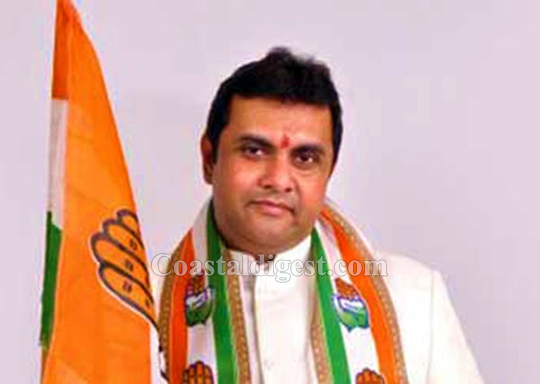Udupi, Aug 9: Pramod Madhwaraj, the minister for fisheries, sports and youth affairs, Karnataka is the 10th richest state minister in India, according to a report by Association for Democratic Reforms (ADR).

Mr Madhwaraj, who represents Udupi constituency in Karnataka Legislative Assembly, had entered the state cabinet through a recent cabinet reshuffle.
Son of former MLA Late Malpe Madhwaraj and former minister Manorama Madhwaraj, the Mogaveera community stalwart is the proprietor of Raj fish meal and oil company, Malpe, which is the largest manufacturer of fish meal and fish oil in India.
Mr Madhwaraj is the chairman of Canara Jewel Tex Pvt. Ltd, which runs a large mall of gold and sarees in Udupi district, called The Wedding Palace'. He is the managing partner of Coronet fish products, an exporter of canned fish. He is also the chairman of Malpe Manipal Builders.
Four from Karnataka
Interestingly, four of the country's 10 richest state ministers are from Karnataka, and 97% of this south Indian state's ministers are crorepatis. Energy minister D K Shivakumar is the second richest state minister in the country with assets worth Rs 251crore.
Labour minister Santosh Lad comes in third with assets worth Rs 186 crore. Planning minister M R Seetharam ranks sixth with assets worth Rs 136 crore and Mr Madhwaraj is in 10th place with Rs 105 crore.
Those with high assets have their liabilities too and again, Shivakumar tops this list with liabilities of Rs 105 crore, Seetharam comes in third with Rs 53 crore, Madhwaraj is fourth with Rs 44 crore and water resources minister M B Patil ranked 10th with Rs 19 crore. Patil's assets are worth Rs 40 crore.
Andhra Pradesh minister Ponguru Narayana who is the richest minister with assets worth Rs 441crore and liabilities of Rs 44 crore.
The 'poorest' minister in the country is Samajwadi Party's Tej Narayana from Faizabad constituency in Ayodhya, who has declared assets of just Rs 66,612.
ADR in a statement said it sourced the details from the affidavits filed by ministers at the time of submitting nomination papers to the Election Commission. Declarations of a total of 609 ministers out of 620 have been analysed from 29 state assemblies and two Union Territories by ADR.
Also Read:
Udupi MLA Pramod Madhwaraj buys Rolls Royce Ghost for Rs 5.8 crore!
34% state ministers in India criminals, 97% ministers in Karnataka crorepatis





Comments
These richest should start some kind big industries and provide employment opportunity to all unemployed around that area.
dear all,
I dont know anything about other ministers, But Mr. Pramaod he is a well known person. he thinks about the poor people. you guys might not knowing, how much he donate the money to all kind of activities and for the people. At last he is not even interested in corrupted money. God has given him alloott.. Please think twice to comment if you dont know anything.
Hope his richness helps the POOR of our society...
Add new comment